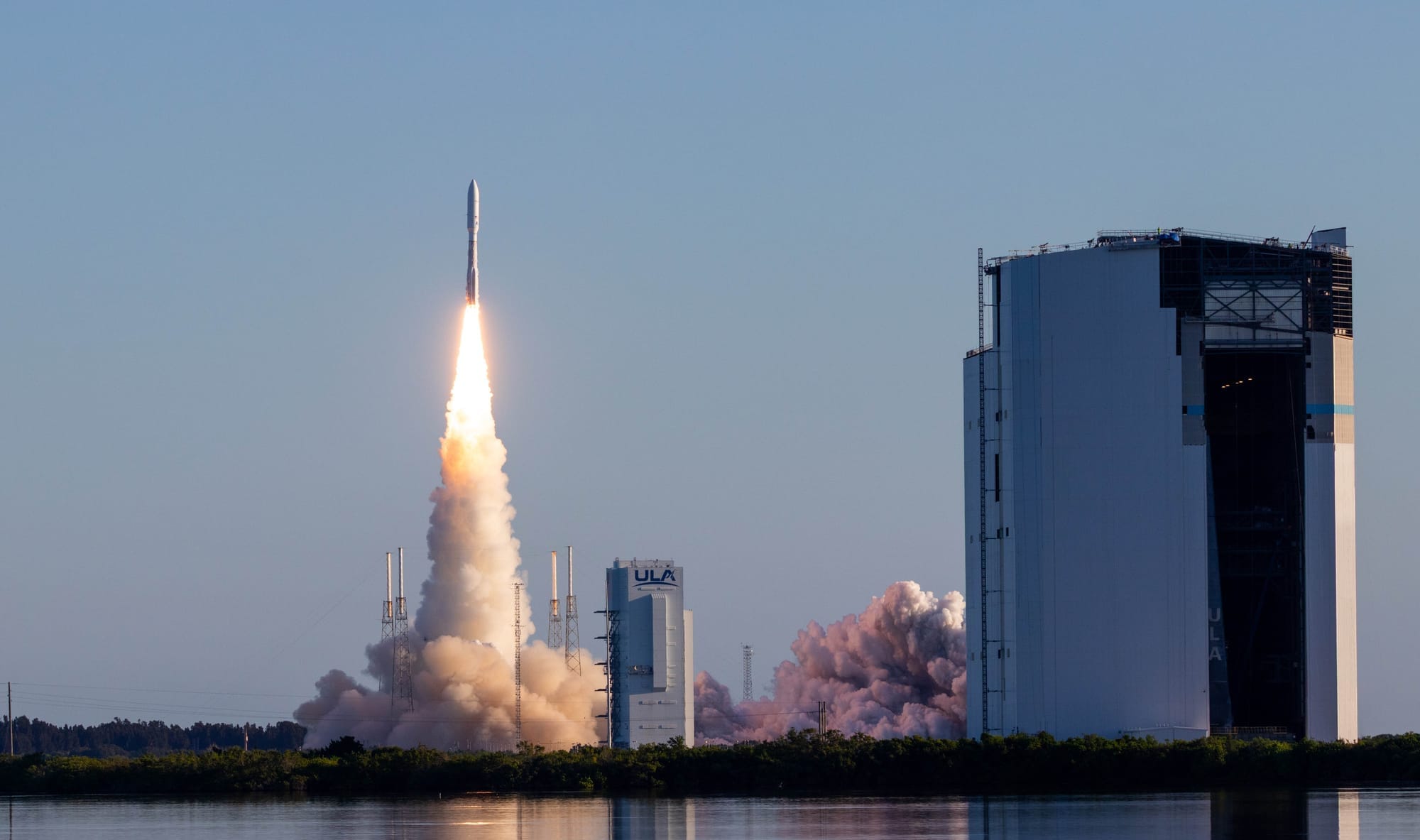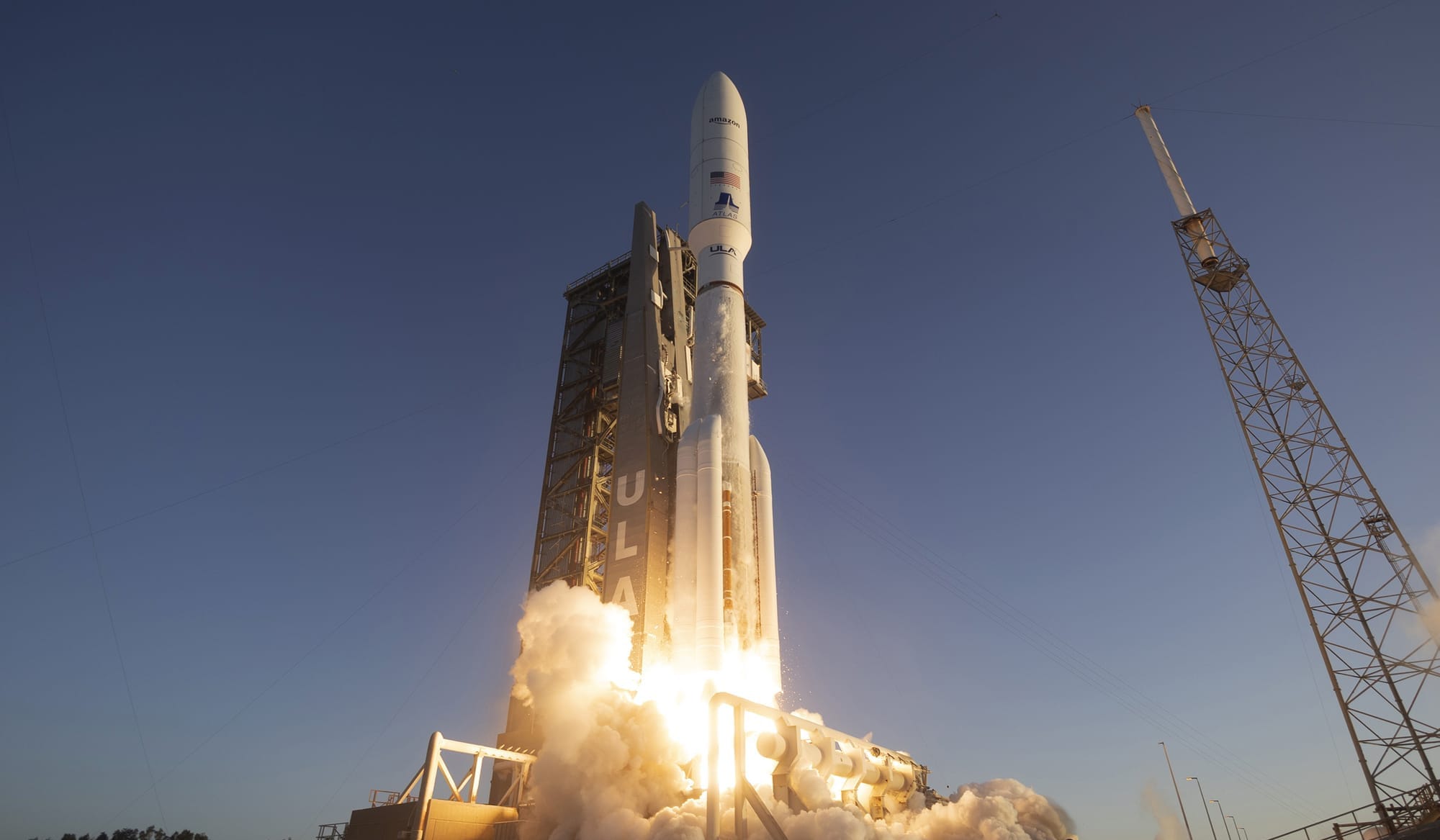Table of Contents
Amazon's first Kuiper mission, KA-01 (for Kuiper Atlas 1), blasted off from Space Launch Complex 41, in Florida, atop of United Launch Alliance's Atlas V at 23:01 UTC on April 28th. This launch has placed the first group of the company's internet-providing mega-constellation satellites in low Earth orbit.
The launch of Kuipers's first batch of satellites marks the beginning of full-scale deployment of the constellation. Before today, two test satellites were launched back in late 2023. Those two satellites tested key technologies needed for the full constellation before being deorbited.
Amazon hopes that Kuiper, via over 3,200 satellites, will deliver high-speed, low-latency internet to any location on the planet. Rajeev Badyal, Vice President of Project Kuiper, shared the following regarding the start of the constellation:
“We’ve designed some of the most advanced communications satellites ever built, and every launch is an opportunity to add more capacity and coverage to our network,” – “We’ve done extensive testing on the ground to prepare for this first mission, but there are some things you can only learn in flight, and this will be the first time we’ve flown our final satellite design and the first time we’ve deployed so many satellites at once. No matter how the mission unfolds, this is just the start of our journey, and we have all the pieces in place to learn and adapt as we prepare to launch again and again over the coming years.”
For Atlas V's heaviest payload ever launched, with twenty-seven Kuiper satellites onboard, the use of the rocket 551 configuration was necessary (551: five solid rocket boosters, a five-meter fairing, and a single RL-10 engine on Centaur). Atlas V's 551 configuration can deliver 18,814 kilograms to low Earth orbit, indicating that each Kuiper satellite could weigh as much as 690 kilograms.
With a successful launch completed, Amazon is already working towards Kuiper's next launch, KA-02, atop of another Atlas V carrying another group of twenty-seven satellites. United Launch Alliance's Cheif Executive Officer Tory Bruno commented on today's launch and future ones, stating:
"This launch marks the first step towards the future of our partnership and increased launch cadence. We have been steadily modifying our launch facilities in Cape Canaveral to support the capacity for future Project Kuiper missions in a manner that will ultimately benefit both our commercial and government customers as we endeavor to save lives, explore the universe and connect the world."
Following the deployment of further satellites, services from Kuiper are planned to be available later this year at speeds of up to one gigabit per second.
In order to meet a deadline with the U.S. Federal Communications Commission, half of the Kuiper's constellation, around 1,600 satellites, will need to be launched by mid-2026. Currently, Amazon has bought over eighty launches to deploy the constellation, including launches atop of Europe's Ariane 6, Blue Origin's New Glenn, United Launch Alliance's Atlas V and Vulcan, as well as SpaceX's Falcon 9. Additionally, Amazon has invested 140 million United States Dollars in a spacecraft storage and integration facility at Cape Canaveral to streamline launch preparations.
Competing with SpaceX and China
With the first Kuiper launch, Amazon is facing an uphill battle in the internet mega-constellation satellite market. So far SpaceX has had a five-year advantage while China has had just under one year. Both also launched satellites for their respective mega-constellations in the hours prior to Kuiper's first mission.
SpaceX's Starlink constellation is currently the dominant player for low Earth orbit-based satellite internet, with around 6,000 satellites in orbit and over five million customers receiving services. Satellites are constantly being added to the constellation each week via Falcon 9, SpaceX's partially reusable rocket.
In the last year, SpaceX has begun to offer direct-to-device services too. These services are provided via T-Mobile in the U.S., Optus in Australia, Rogers in Canada, One NZ in New Zealand, and KDDI in Japan, among many others. Several airlines have partnered with SpaceX to provide in-flight service too.
Outside of the U.S., China has two mega-constellations currently being deployed. Those are Qianfan, with 90 satellites of 15,000 deployed, and GuoWang, with 29 satellites of 12,000 deployed. Neither of the constellations are currently available to customers, but agreements to expand abroad have already been signed.
Strategic reasons are believed to be the driver behind China's constellation for now, specifically regarding the digital economy. One such is that satellite internet constellations could be major parts of future 6G networks, which currently have no established standards. China's 2024 Central Economic Work Conference identified 6G technologies as a critical developing industry for economic growth. Additionally, as part of national poverty alleviation programs, connecting individuals to the societal and economic benefits of China's increasingly digital environment could improve the lives of roughly 300 million people.
It's unclear when Qianfan and GuoWang will seek a return on investment, but Blaine Curcio, Founder of Orbital Gateway Consulting, believes that the Chinese government is willing to invest in mega-constellations, without a guaranteed return on investment, due to the potential for unrealized or emerging technology needing services offered by these constellations.
In Europe, there is also Eutelsat's OneWeb constellation of over 600 satellites which the continent may favor for strategic autonomy following political shifts in the U.S. since January.
To assist in competing, Amazon has partnered with Japan's Nippon Telegraph and Telephone, America's Verizon, and the UK's Vodafone to bring services directly to consumers. Furthermore, the company is teaming up with Airbus to provide its airliners with in-flight connectivity.
What is Atlas V?
Atlas V is United Launch Alliance's oldest two-stage rocket in service. The rocket is currently planned to be replaced by Vulcan when it retires before 2030.
The first-stage is powered by a single RD-180 generating 390 tons of thrust burning rocket-grade kerosene and liquid oxygen for four minutes and thirteen seconds. The RD-180 is manufactured by NPO Energomash in Russia.
The second-stage is powered by either one or two RL-10 engines generating 10 tons of thrust each while burning liquid hydrogen and liquid oxygen for up to fourteen minutes and two seconds. Aerojet Rocketdyne, an L3Harris Technologies Company, manufactures the RL-10 engines.
Atlas V can also launch with between zero and five GEM-63 solid rocket motors to augment the rocket's thrust and payload capability. Each booster burns a solid propellant, consisting of Hydroxyl-terminated polybutadiene and Aluminum-Ammonium perchlorate, generating 169 tons of thrust each for a believed one minute and thirty-four seconds. Northrop Grumman manufactures the solid rocket boosters for use with United Launch Alliance.
Atlas V also has eleven different configurations with the following payload capacities: up to 18,814 kilograms to low Earth orbit, up to 8,900 kilograms to geostationary transfer orbit, or up to 3,850 kilograms to geostationary orbit.






